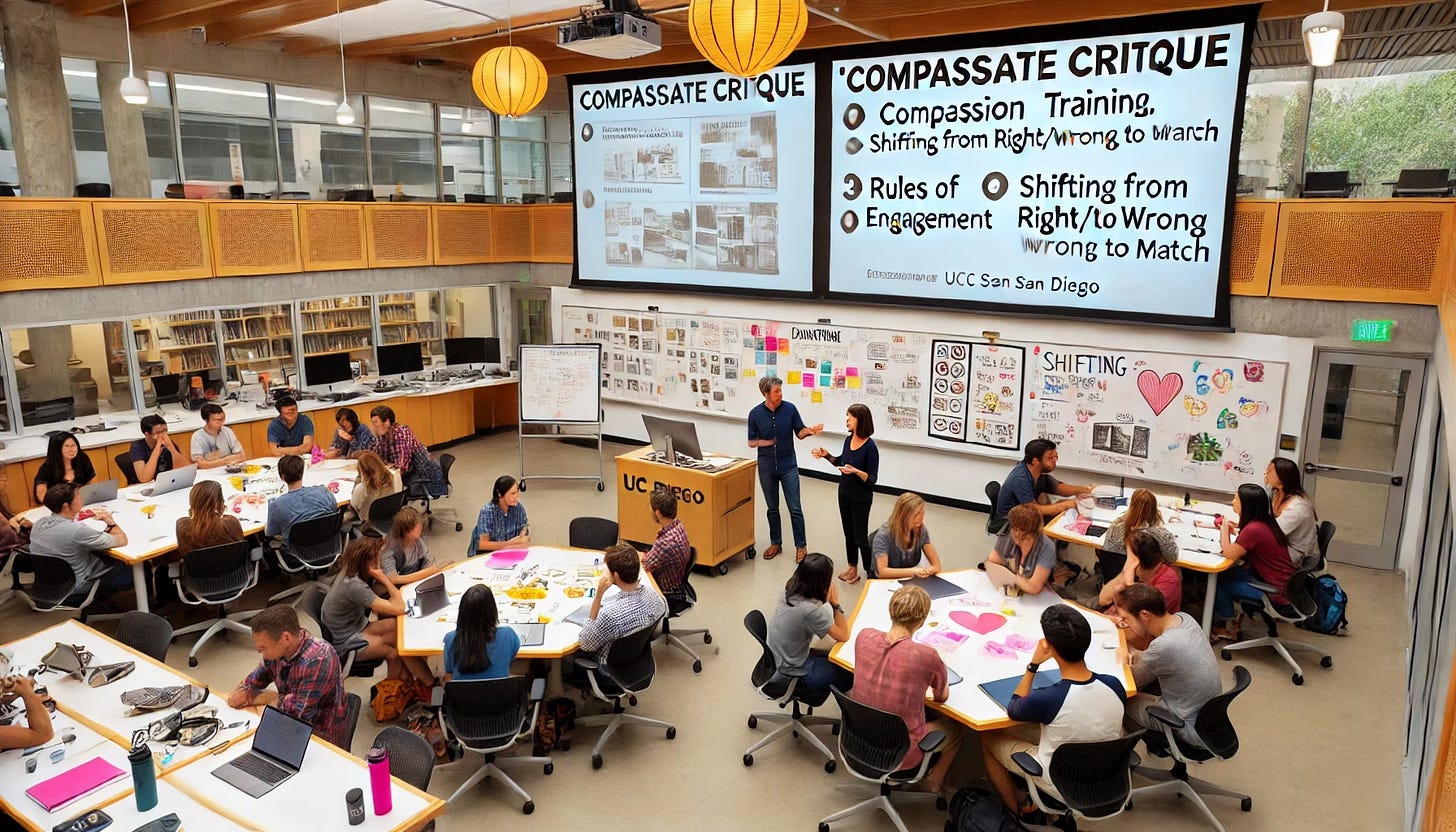[image created by ChatGPT]
Dr. Elizabeth Eikey (Lizz) and I are Professors at UC San Diego, affiliated with both the Design Lab and the Herbert Wertheim School of Public Health and Human Longevity Science. Several years ago, while leading an initiative within the Design Lab, I became the Founding Director of the Design Lab’s Transdisciplinary "Design Specialization” program. This program, functioning like a graduate-level minor in design, was created to provide both master's and PhD students from diverse disciplines the opportunity to learn about and engage with design methods.
When designing the program, the committee—including Lizz, who is now directing the specialization—was intentional about ensuring students received both breadth (exposure to a wide range of design methods used across the Design Lab) and depth (an understanding of the design approach most common within their home discipline). To achieve this, we took two key steps:
Created DSGN 201, a required foundational course that Lizz and I co-developed, alongside a seminar series called Design@Large, featuring guest speakers on design.
Integrated the program within master's and PhD curricula, requiring that participating programs offer at least two courses teaching their discipline’s design approach while aligning with the broader philosophy of design used in the Lab.
The Birth of Compassionate Critique
Once we secured University of California approval for the program, Lizz and I began developing DSGN 201. Given the course’s goal of exposing students to multiple perspectives and disciplines, we needed a structured process that could help students understand different ways of thinking, acting, and knowing—regardless of their prior training. This need sparked the creation of the Compassionate Critique approach.
We began by drawing on prior teaching experiences:
In my classes, I had long used self-study and self-experimentation as tools to help students understand psychology and human behavioral change. I found that when students attempt to change their own behaviors, they develop a deeper sense of care and compassion for others who struggle with change.
I had also developed unconventional approaches to guiding discussions and dialogue, influenced by my background in clinical psychology.
Lizz brought her expertise in teaching, particularly as a co-director of the I³ program.
We then reviewed relevant research and frameworks. Through discussions, we iteratively refined the framework, debating terminology, implications for classroom use, and how it would help students appreciate different disciplinary perspectives. Being trained designers, we treated this process as a prototype, continuously testing and refining it through slides and in-class activities.
The Three Elements of Compassionate Critique
Once we solidified the framework conceptually, we focused on integrating it into our teaching. Compassionate Critique is built around three interrelated but distinct practices:
Compassion Training – Inspired by Thupten Jinpa’s A Fearless Heart and Frank Rogers’ Practicing Compassion, we incorporated strategies to help students cultivate self-compassion and compassion for others—especially when engaging with unfamiliar or conflicting perspectives. We emphasized recognizing one’s own “bubble” and other’s “bubbles” and avoiding snap judgments about others.
Rules of Engagement – Drawing from Cecilia Ridgeway’s Status and Staci Haines’ The Politics of Trauma, we established classroom norms that allowed students to pause discussions to reflect on implicit power dynamics and engagement rules. This created space for examining historical biases that might privilege certain voices over others.
Shifting from Right/Wrong to Match – Based on my prior work on just-in-time adaptive interventions and Precision Health, we encouraged students to move beyond debates about "right" and "wrong" and instead focus on matching—asking when, where, and for whom different methods are most appropriate. This approach helps students appreciate the constraints and applicability of design methods across disciplines.
Impact and Student Feedback
Since launching DSGN 201, Lizz and I have either co-taught or independently taught the course and have incorporated Compassionate Critique into other classes as well. Collectively, many students have engaged with this approach.
So, how has it worked?
The feedback has been overwhelmingly positive!
Students report feeling more capable of listening, thinking through complex issues, and navigating emotionally and politically charged discussions—all while maintaining their own perspectives without diminishing themselves or others. They also gain a deeper appreciation of both the limitations of their own discipline’s design methods and the strengths of alternative approaches. From this, they report feeling more capable of acting in accordance with their values.





